Publications
Filter by type:
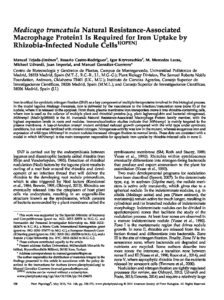
Medicago truncatula Natural Resistance-Associated Macrophage Protein1 Is Required for Iron Uptake by Rhizobia-Infected Nodule Cells
Abstract
Iron is critical for symbiotic nitrogen fixation as a key component of multiple ferroproteins involved in this biological process. In the model legume Medicago truncatula, iron is delivered by the vasculature to the infection/maturation zone (zone II) of the nodule where it is released to the apoplast. From there, plasma membrane iron transporters move it into rhizobia-containing cells, where iron is used as the cofactor of multiple plant and rhizobial proteins, e.g. plant leghemoglobin and bacterial nitrogenase. MtNramp1 (Medtr3g088460) is the M. truncatula Nramp family member with the highest expression levels in roots and nodules. Immunolocalization studies indicate that MtNramp1 is mainly targeted to the plasma membrane. A loss-of-function nramp1 mutant exhibited reduced growth compared to the wild type under symbiotic conditions, but not when fertilized with mineral nitrogen. Nitrogenase activity was low in the mutant, whereas exogenous iron and expression of wild-type MtNramp1 in mutant nodules increased nitrogen fixation to normal levels. These data are consistent with a model in which MtNramp1 is the main transporter responsible for apoplastic iron uptake by rhizobia-infected cells in zone II.

Functional genomics of symbiotic nitrogen fixation in legumes with a focus on transcription factors and membrane transporters
Abstract
Transcription factors (TFs), transcription regulators (TR), and membrane transporters are major determinants of nodule development and function. TFs and TRs control genetic reprogramming, and transporters facilitate exchange of nutrients between plant and rhizobia among other things. Here, we describe the strategy of reverse genetic screening in Medicago truncatula for genes from these two functional classes. We employed well-established transcriptomic resources (Medicago gene expression atlas), a spatially resolved nodule transcriptomic data set, and the tobacco retrotransposon Tnt1 insertion mutant population for systematic selection and functional analysis of candidate genes. We also re-annotated 417 nodule-induced TF and TR genes according to IMGAG3.5v4, which is the latest release of the Medicago genome. In total, we have targeted 21 nodule-enhanced TF and TR genes, and 20 nodule-enhanced transporter genes for characterization via insertional mutagenesis. In this chapter, we emphasize the importance of TFs, TRs, and transport proteins for symbiotic nitrogen fixation (SNF) and discuss the use of the Medicago Tnt1 mutant population for studies of gene function.
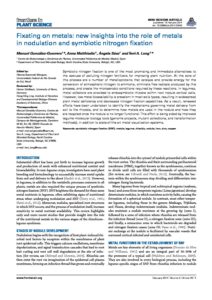
Fixating on metals: new insights into the role of metals in nodulation and symbiotic nitrogen fixation
Abstract
Symbiotic nitrogen fixation is one of the most promising and immediate alternatives to the overuse of polluting nitrogen fertilizers for improving plant nutrition. At the core of this process are a number of metalloproteins that catalyze and provide energy for the conversion of atmospheric nitrogen to ammonia, eliminate free radicals produced by this process, and create the microaerobic conditions required by these reactions. In legumes, metal cofactors are provided to endosymbiotic rhizobia within root nodule cortical cells. However, low metal bioavailability is prevalent in most soils types, resulting in widespread plant metal deficiency and decreased nitrogen fixation capabilities. As a result, renewed efforts have been undertaken to identify the mechanisms governing metal delivery from soil to the rhizobia, and to determine how metals are used in the nodule and how they are recycled once the nodule is no longer functional. This effort is being aided by improved legume molecular biology tools (genome projects, mutant collections, and transformation methods), in addition to state-of-the-art metal visualization systems.

Sinorhizobium meliloti Nia is a P1B-5-ATPase expressed in the nodule during plant symbiosis and is involved in Ni and Fe transport
Abstract
The P1B-ATPases are a ubiquitous family of metal transporters. These transporters are classified into subfamilies on the basis of substrate specificity, which is conferred by conserved amino acids in the last three transmembrane domains. Five subfamilies have been identified to date, and representative members of four (P1B-1 to P1B-4) have been studied. The fifth family (P1B-5), of which some members contain a C-terminal hemerythrin (Hr) domain, is less well characterized. The S. meliloti Sma1163 gene encodes for a P1B-5-ATPase, denoted Nia (Nickel/iron ATPase), that is induced by exogenous Fe2+ and Ni2+. The nia mutant accumulates nickel and iron, suggesting a possible role in detoxification of these two elements under free-living conditions, as well as in symbiosis, when the highest expression levels are measured. This function is supported by an inhibitory effect of Fe2+ and Ni2+ on the pNPPase activity, and by the ability of Nia to bind Fe2+ in the transmembrane domain. Optical and X-ray absorption spectroscopic studies of the isolated Hr domain confirm the presence of a dinuclear iron center and suggest that this domain might function as an iron sensor.
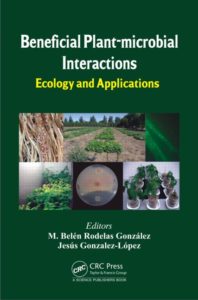
Metal transport in the Rhizobium-legume simbiosis
Abstract
Iron, zinc, copper, molybdenum and some other transition metals are essential nutrients (Fraustro da Silva and Williams 2001). They are constitutive elements of around half of the proteins of a typical cell (Andreini et al. 2008), where they may act as structural elements, such as zinc in the zinc finger domain, but mostly as key elements in the active site of enzymes involved in almost every physiological process, from oxidative respiration to photosynthesis. These elements are growth-limiting nutrients for autotrophic organisms, since they form ve1y stable complexes, resulting in low solubility and making their uptake difficult (Ruel and Bouis 1998, Fung et al. 2000, Grotz and Guerinot 2006). Moreover, living beings cannot accumulate high amounts of essential transition metals, since these elements can catalyze the production of free radicals in Fenton-style reactions or compete with other metals for the active site of metalloenzymes (Goldstein et al. 1993, Ranquet et al. 2007, Macomber and Imlay 2009). This is also the basis of the toxic effect of non-biogenic metals such as cadmium, lead or mercury.
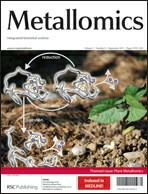
Iron distribution through the developmental stages of Medicago truncatula nodules
Abstract
Paramount to symbiotic nitrogen fixation (SNF) is the synthesis of a number of metalloenzymes that use iron as a critical component of their catalytical core. Since this process is carried out by endosymbiotic rhizobia living in legume root nodules, the mechanisms involved in iron delivery to the rhizobia-containing cells are critical for SNF. In order to gain insight into iron transport to the nodule, we have used synchrotron-based X-ray fluorescence to determine the spatio-temporal distribution of this metal in nodules of the legume Medicago truncatula with hitherto unattained sensitivity and resolution. The data support a model in which iron is released from the vasculature into the apoplast of the infection/differentiation zone of the nodule (zone II). The infected cell subsequently takes up this apoplastic iron and delivers it to the symbiosome and the secretory system to synthesize ferroproteins. Upon senescence, iron is relocated to the vasculature to be reused by the shoot. These observations highlight the important role of yet to be discovered metal transporters in iron compartmentalization in the nodule and in the recovery of an essential and scarce nutrient for flowering and seed production.
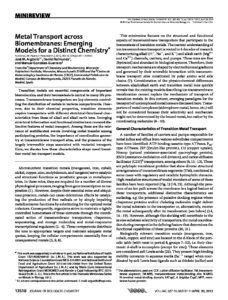
Metal transport across biomembranes: emerging models for a distinct chemistry
Abstract
Transition metals are essential components of important biomolecules, and their homeostasis is central to many life processes. Transmembrane transporters are key elements controlling the distribution of metals in various compartments. However, due to their chemical properties, transition elements require transporters with different structural-functional characteristics from those of alkali and alkali earth ions. Emerging structural information and functional studies have revealed distinctive features of metal transport. Among these are the relevance of multifaceted events involving metal transfer among participating proteins, the importance of coordination geometry at transmembrane transport sites, and the presence of the largely irreversible steps associated with vectorial transport. Here, we discuss how these characteristics shape novel transition metal ion transport models.
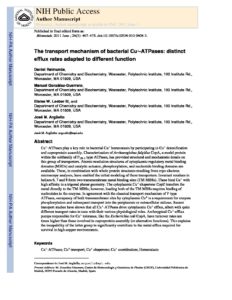
The transport mechanism of bacterial Cu+-ATPasess: distinct efflux rates adapted to different function
Abstract
Cu+-ATPases play a key role in bacterial Cu+ homeostasis by participating in Cu+ detoxification and cuproprotein assembly. Characterization of Archaeoglobus fulgidus CopA, a model protein within the subfamily of P1B-1 type ATPases, has provided structural and mechanistic details on this group of transporters. Atomic resolution structures of cytoplasmic regulatory metal binding domains (MBDs) and catalytic actuator, phosphorylation, and nucleotide binding domains are available. These, in combination with whole protein structures resulting from cryo-electron microscopy analyses, have enabled the initial modeling of these transporters. Invariant residues in helixes 6, 7 and 8 form two transmembrane metal binding sites (TM-MBSs). These bind Cu+ with high affinity in a trigonal planar geometry. The cytoplasmic Cu+ chaperone CopZ transfers the metal directly to the TM-MBSs; however, loading both of the TM-MBSs requires binding of nucleotides to the enzyme. In agreement with the classical transport mechanism of P-type ATPases, occupancy of both transmembrane sites by cytoplasmic Cu+ is a requirement for enzyme phosphorylation and subsequent transport into the periplasmic or extracellular milieus. Recent transport studies have shown that all Cu+-ATPases drive cytoplasmic Cu+ efflux, albeit with quite different transport rates in tune with their various physiological roles. Archetypical Cu+-efflux pumps responsible for Cu+ tolerance, like the Escherichia coli CopA, have turnover rates ten times higher than those involved in cuproprotein assembly (or alternative functions). This explains the incapability of the latter group to significantly contribute to the metal efflux required for survival in high copper environments.
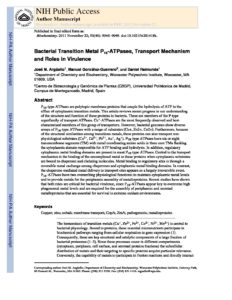
Bacterial transition metal P1B-ATPases: transport mechanism and roles in virulence
Abstract
P1B-type ATPases are polytopic membrane proteins that couple the hydrolysis of ATP to the efflux of cytoplasmic transition metals. This article reviews recent progress in our understanding of the structure and function of these proteins in bacteria. These are members of the P-type superfamily of transport ATPases. Cu+-ATPases are the most frequently observed and best-characterized members of this group of transporters. However, bacterial genomes show diverse arrays of P1B-type ATPases with a range of substrates (Cu+, Zn2+, Co2+). Furthermore, because of the structural similarities among transitions metals, these proteins can also transport non-physiological substrates (Cu2+, Cd2+, Pb2+, Au+, Ag+). P1B-type ATPases have six or eight transmembrane segments (TM) with metal coordinating amino acids in three core TMs flanking the cytoplasmic domain responsible for ATP binding and hydrolysis. In addition, regulatory cytoplasmic metal binding domains are present in most P1B-type ATPases. Central to the transport mechanism is the binding of the uncomplexed metal to these proteins when cytoplasmic substrates are bound to chaperone and chelating molecules. Metal binding to regulatory sites is through a reversible metal exchange among chaperones and cytoplasmic metal binding domains. In contrast, the chaperone-mediated metal delivery to transport sites appears as a largely irreversible event. P1B-ATPases have two overarching physiological functions: to maintain cytoplasmic metal levels and to provide metals for the periplasmic assembly of metalloproteins. Recent studies have shown that both roles are critical for bacterial virulence, since P1B-ATPases appear key to overcome high phagosomal metal levels and are required for the assembly of periplasmic and secreted metalloproteins that are essential for survival in extreme oxidant environments.
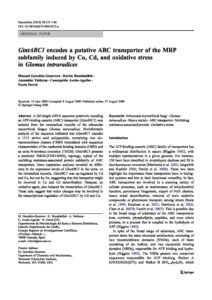
GintABC1 encodes a putative ABC transporter of the MRP subfamily induced by Cu, Cd and oxidative stress in Glomus intraradices
Abstract
A full-length cDNA sequence putatively encoding an ATP-binding cassette (ABC) transporter (GintABC1) was isolated from the extraradical mycelia of the arbuscular mycorrhizal fungus Glomus intraradices. Bioinformatic analysis of the sequence indicated that GintABC1 encodes a 1513 amino acid polypeptide, containing two six-transmembrane clusters (TMD) intercalated with sequences characteristics of the nucleotide binding domains (NBD) and an extra N-terminus extension (TMD0). GintABC1 presents a predicted TMD0-(TMD-NBD)2 topology, typical of the multidrug resistance-associated protein subfamily of ABC transporters. Gene expression analyses revealed no difference in the expression levels of GintABC1 in the extra- vs the intraradical mycelia. GintABC1 was up-regulated by Cd and Cu, but not by Zn, suggesting that this transporter might be involved in Cu and Cd detoxification. Paraquat, an oxidative agent, also induced the transcription of GintABC1. These data suggest that redox changes may be involved in the transcriptional regulation of GintABC1 by Cd and Cu.
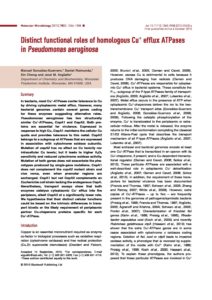
Distinct functional roles of homologous Cu+ efflux ATPases in Pseudomonas aeruginosa
Abstract
In bacteria, most Cu+-ATPases confer tolerance to Cu by driving cytoplasmic metal efflux. However, many bacterial genomes contain several genes coding for these enzymes suggesting alternative roles. Pseudomonas aeruginosa has two structurally similar Cu+-ATPases, CopA1 and CopA2. Both proteins are essential for virulence. Expressed in response to high Cu, CopA1 maintains the cellular Cu quota and provides tolerance to this metal. CopA2 belongs to a subgroup of ATPases that are expressed in association with cytochrome oxidase subunits. Mutation of copA2 has no effect on Cu toxicity nor intracellular Cu levels; but it leads to higher H2O2 sensitivity and reduced cytochrome oxidase activity. Mutation of both genes does not exacerbate the phenotypes produced by single-gene mutations. CopA1 does not complement the copA2 mutant strain and vice versa, even when promoter regions are exchanged. CopA1 but not CopA2 complements an Escherichia coli strain lacking the endogenous CopA. Nevertheless, transport assays show that both enzymes catalyse cytoplasmic Cu+efflux into the periplasm, albeit CopA2 at a significantly lower rate. We hypothesize that their distinct cellular functions could be based on the intrinsic differences in transport kinetic or the likely requirement of periplasmic partner Cu-chaperone proteins specific for each Cu+-ATPase.
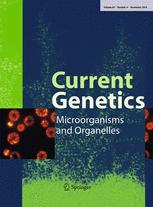
Characterization of a Cu,Zn superoxide dismutase gene in the arbuscular mycorrhizal fungus Glomus intraradices
Abstract
To gain further insights into the mechanisms of redox homeostasis in arbuscular mycorrhizal fungi, we characterized a Glomus intraradices gene (GintSOD1) showing high similarity to previously described genes encoding CuZn superoxide dismutases (SODs). The GintSOD1 gene consists of an open reading frame of 471 bp, predicted to encode a protein of 157 amino acids with an estimated molecular mass of 16.3 kDa. Functional complementation assays in a CuZnSOD-defective yeast mutant showed that GintSOD1 protects the yeast cells from oxygen toxicity and that it, therefore, encodes a protein that scavenges reactive oxygen species (ROS). GintSOD1 transcripts differentially accumulate during the fungal life cycle, reaching the highest expression levels in the intraradical mycelium. GintSOD1 expression is induced by the well known ROS-inducing agents paraquat and copper, and also by fenpropimorph, a sterol biosynthesis inhibitor (SBI) fungicide. These results suggest that GintSOD1 is involved in the detoxification of ROS generated from metabolic processes and by external agents. In particular, our data indicate that the antifungal effects of fenpropimorph might not be only due to the interference with sterol metabolism but also to the perturbation of other biological processes and that ROS production and scavenging systems are involved in the response to SBI fungicides.

Survival strategies of arbuscular mycorrhizal fungi in Cu-polluted environments
Abstract
This review provides an overview of the mechanisms evolved by arbuscular mycorrhizal (AM) fungi to survive in Cu-contaminated environments. These mechanisms include avoidance strategies to restrict entry of toxic levels of Cu into their cytoplasm, intracellular complexation of the metal in the cytosol and compartmentalization strategies. Through the activity of specific metal transporters, the excess of Cu is translocated to subcellular compartments, mainly vacuoles, where it would cause less damage. At the level of the fungal colony, AM fungi have also evolved compartmentalization strategies based on the accumulation of Cu into specific fungal structures, such as extraradical spores and intraradical vesicles. In addition to the avoidance and compartmentalization strategies, AM fungi have also mechanisms to combat the Cu-generated oxidative stress or to repair the damage induced.
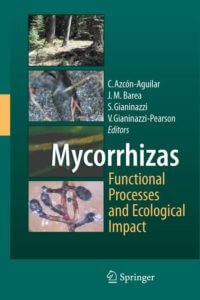
Heavy metal tolerance in arbuscular mycorrhizal fungi
Abstract
The current systems of food production used in Europe and North America have been hugely successful in increasing the yields of arable crops and in reducing the proportion of household budgets devoted to food. Despite this, intensive agricultural systems have had adverse effects on the environment, and the resulting diet has been linked to current health issues. Both the EU and the USA Government have subsidised production. The income derived from subsides has often exceeded that from farming. Such subsidies are unsustainable. Farming must become more market orientated. Past attempts have largely related to attempts to increase yields and reduce costs. The introduction of genetically modified crops is an example of this approach. An alternative has been to increase income from farming by producing products selling at a premium price. Recently, the public have come to question how food is produced and the consequences of particular methodologies. Questions related to the ethical values inherent in systems are increasingly raised. Future agriculture will be more eco-efficient. Against this background, the role of mycorrhizal fungi should be enhanced. These issues are examined here.
Mycorrhizal symbioses are central to the multitrophic interactions that impact plant productivity, competitiveness and survival. This book integrates present-day knowledge from well-known research groups on some of the topics which are at the forefront of mycorrhizal research. Topics include the cell programmes that drive mycorrhiza formation and function, the processes sustaining symbiotic mutualism, stress response mechanisms in mycorrhizal symbionts, and the diversity and ecological impacts of mycorrhizal systems. The efficient management of mycorrhizal systems has the potential to support the sustainable production of quality foods while ensuring environmental quality for future generations.

Unravelling potassium nutrition in ectomycorrhizal associations
Comment on